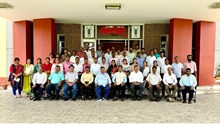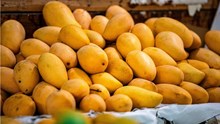
Cotton seed oilcakes are semi-solid material which remains after extracting the oil from the cotton seed. Basically, it is the residual product obtained after the oil is extracted from cotton seeds. Like groundnut cake expeller pressed as well as solvent extracted cotton seed cakes are available for feeding the livestock population. Cotton seed oil cake is largely used as cattle feed as it comprises nearly 25% of protein content, therefore a good source of nutrition for cattle. The wider usage in cattle feed is also because cotton seed oil cake consumption by cattle helps increasing viscosity to the milk (for human consumption). Higher percentage of protein in Cotton seed oilcake makes it suitable for animal feed in India. The consumption of milk in India is on the rising trend and likely to maintain the trend in future, therefore the domestic cotton seed oil cake market is bound to grow year on year.
For producing the oilcake Kapas or raw cotton is first ginned, which results separating the lint from the cotton seed. Lint is the densely covered white/rusty, long and woolly hairs around the seed, and is the main product used in the textiles industry. The cotton seed is finally crushed for extraction of oil, and the by-product which remains after extraction of oil is called Cotton Seed Oil Cake or Kapas Khali. Major production states of cotton seed oil cake in India are Gujarat, Maharashtra, Andhra Pradesh & Punjab. Likewise the key consumption states are Rajasthan, Delhi, Punjab, & Haryana. Annual production of cotton seed oil cake usually fluctuates between 80 and 90 lakh MT. Generally the oil content in Cotton seed oil cake is nearly 6% oil content. Higher is the percentage of oil in cotton seed oil cake, better is its quality. Jute bags are used for its packing and by weight one bag relates to 50 kg of packed cotton seed oilcake.
Cotton seed oil cake also known as cotton meal has a recovery rate of 85-86% and sold in the form of meal, cake, flakes or pellets. Good quality oil cake is greenish, yellow in colour. Accounting for over 30% of total product value of cotton seed, cottonseed oilcake is the second most valuable product, obtained from the cotton seed. Cotton seed oil cake is also used as fertilizer, either alone or in mixtures with other ingredients. The Oil cake is rich in nitrogen, phosphorus, potash, and various other plant food elements. As per ISI standards, quality of cottonseed oil cake is classified on the basis of its oil content, protein, fiber, moisture content, sand/silica and colour. India is the second largest cotton seed producing country in the world, next to China. The average market size for cotton seed oil cake in India is around Rs. 7300 Cr ($73 billion). India has very less export market share of only 0.6 million tons a year since most of it is consumed in the domestic market.
World’s largest producers are India, China, Pakistan, Brazil, United States, Uzbekistan, Turkey and Australia. United States, India, Argentina, Uzbekistan, Benin, European Union, Australia and Turkmenistan lead in exporting cottonseed cake. Major importing nations are South Africa, Mexico, Iran, Korea, Syria, Paraguay and New Zealand. Supplies in India are highest between November and December every year, when cotton arrivals start arriving in the mandis.
In context to the current domestic fundamentals, demand from northern India, including Rajasthan has increased slightly in recent weeks due to which prices have been increasing. However there are concerns about 50% of the total production still lying in the go-downs and warehouses. There are expectations was estimated to produce around 9 million tonnes of cake in the country. Presently there is good demand for cotton cake in Maharashtra, Punjab, Haryana and Rajasthan. As the moisture percentage in cottonseed remains high, there are chances of prices to remain firm in case the moisture starts decreasing. According to trade sources, as long as prices are firm, selling from farmers may be less since they will prefer to wait in order to receive higher returns from their produce.
















